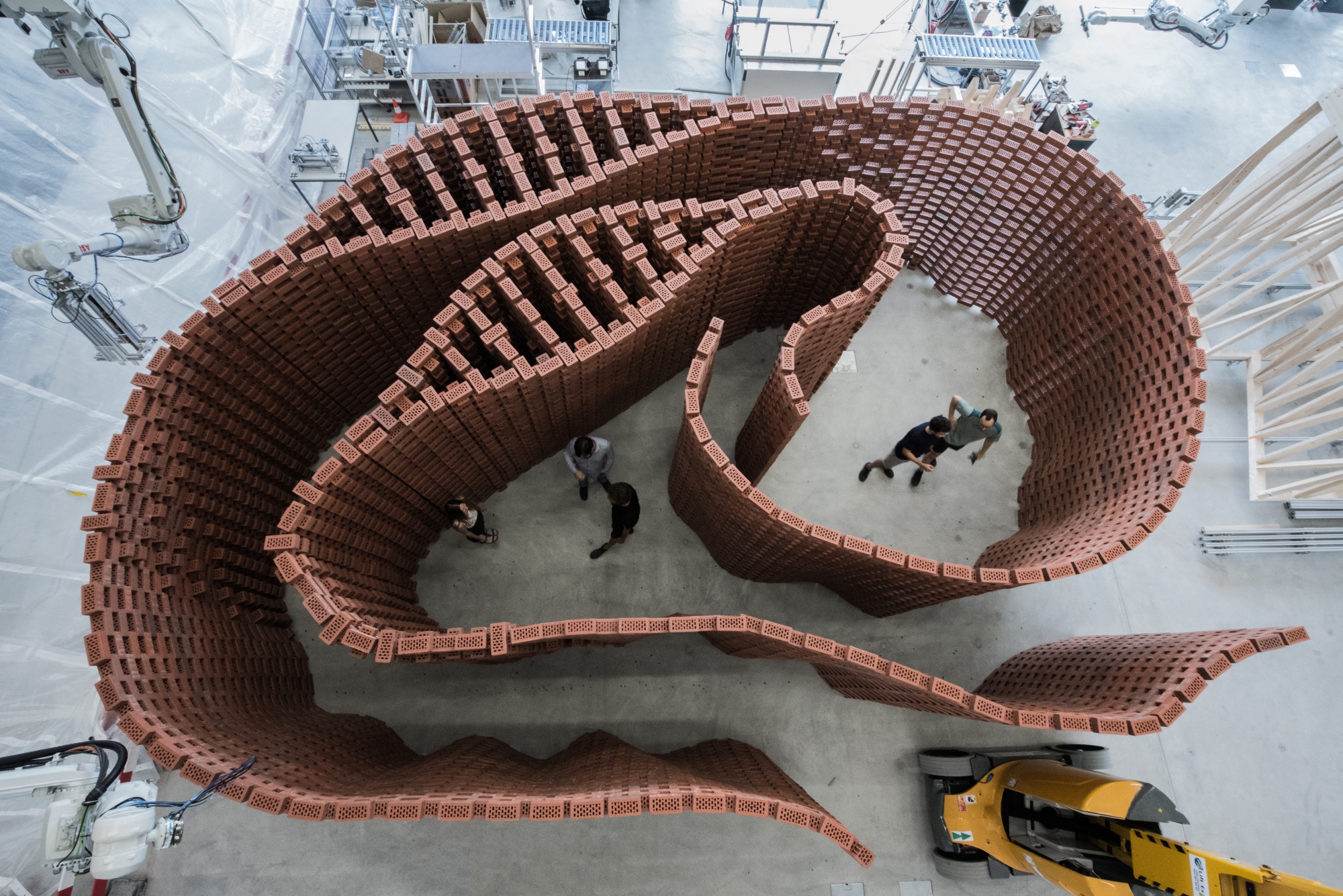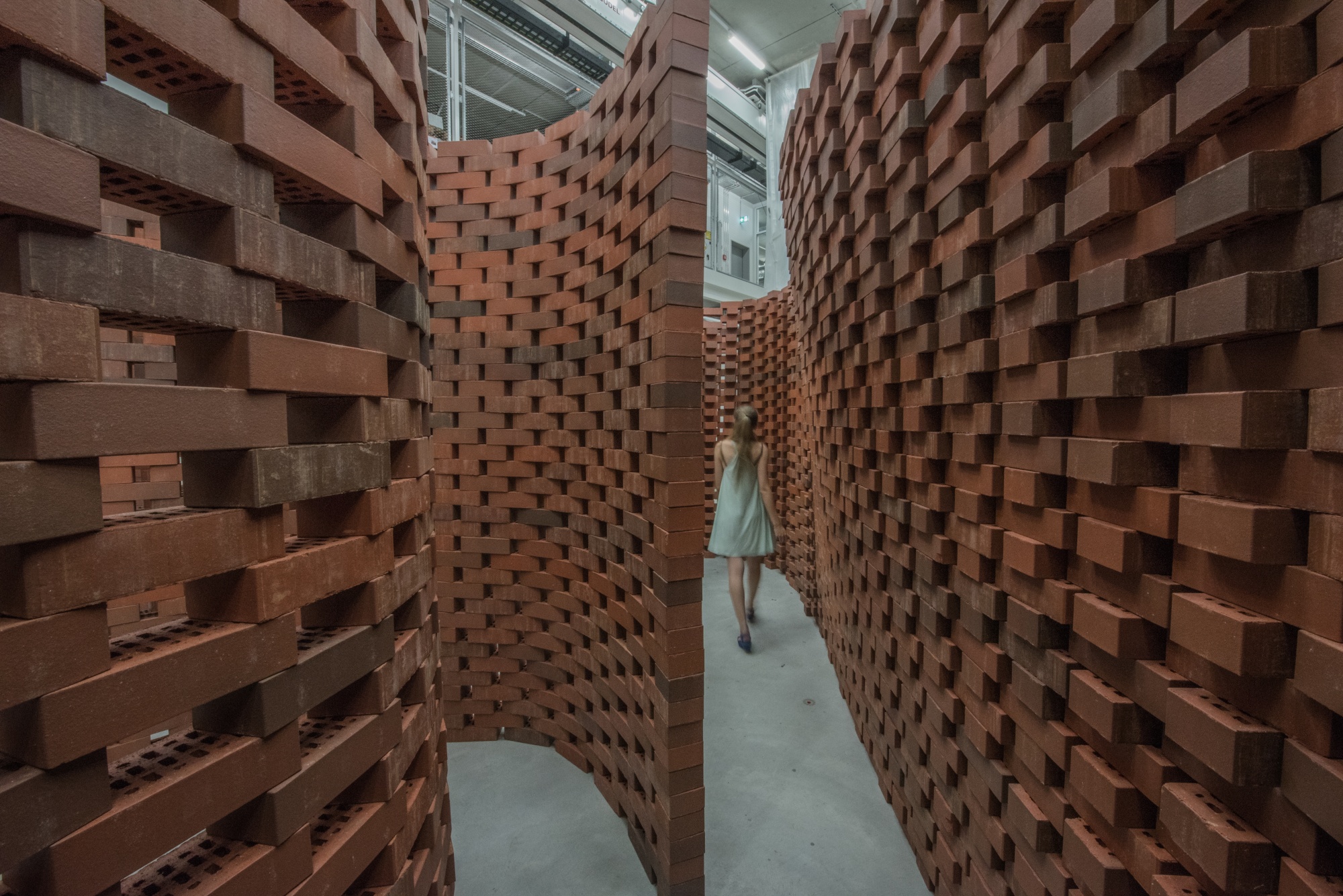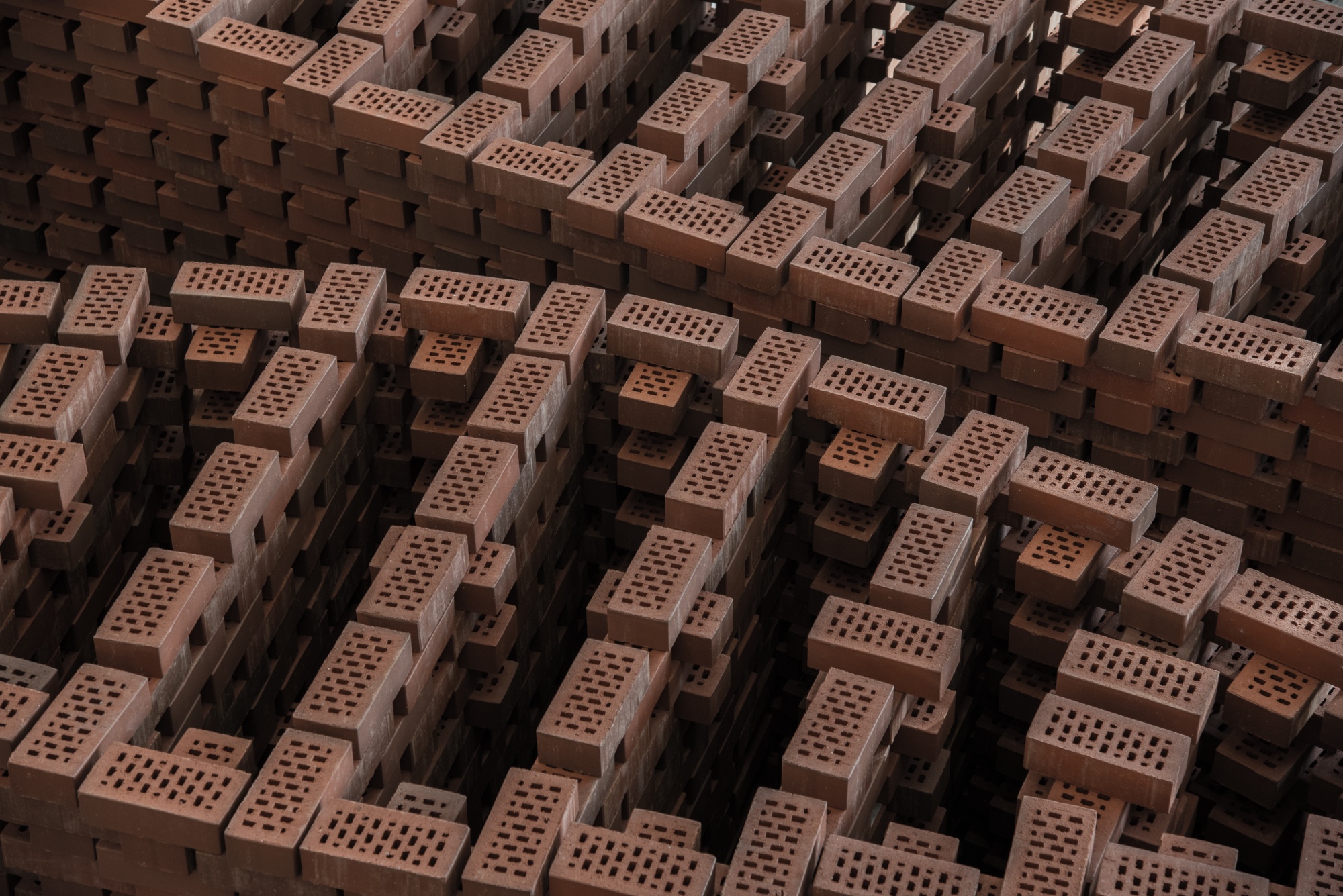Brick Labyrinth

The Brick Labyrinth is re-visiting one of the most archaic building techniques, dry-stacked brick walls, in a completely new setting. For the first time, the Master of Advanced Studies used the multi-robotic gantry system in the Robotic Fabrication Laboratory to build a full-scale architectural installation of a brick labyrinth. Students used computational tools not only to iterate through designs but also to check the stability and feasibility of the produced structures and to generate the sequence and commands to control the multi-robotic fabrication of the final structure. Together with multiple iterations of physical tests and prototypes, this allowed them to design and build the labyrinth which consisted of over 10000 bricks with a weight of 30 tons in under 4 weeks.



Gramazio Kohler Research
Prof. Matthias Kohler, Prof. Fabio Gramazio
Teaching Team: David Jenny, Luka Piskorec, Stefana Parascho, Hannes Mayer
Sponsors and Collaborators: Keller AG Ziegeleien
Special Thanks: Mike Lyrenmann and Philippe Fleischmann (Robotic Fabrication Laboratory), Andreas Reusser (Concrete Lab)
© Digital Building Technologies | Gramazio Kohler Research | ETH Zurich